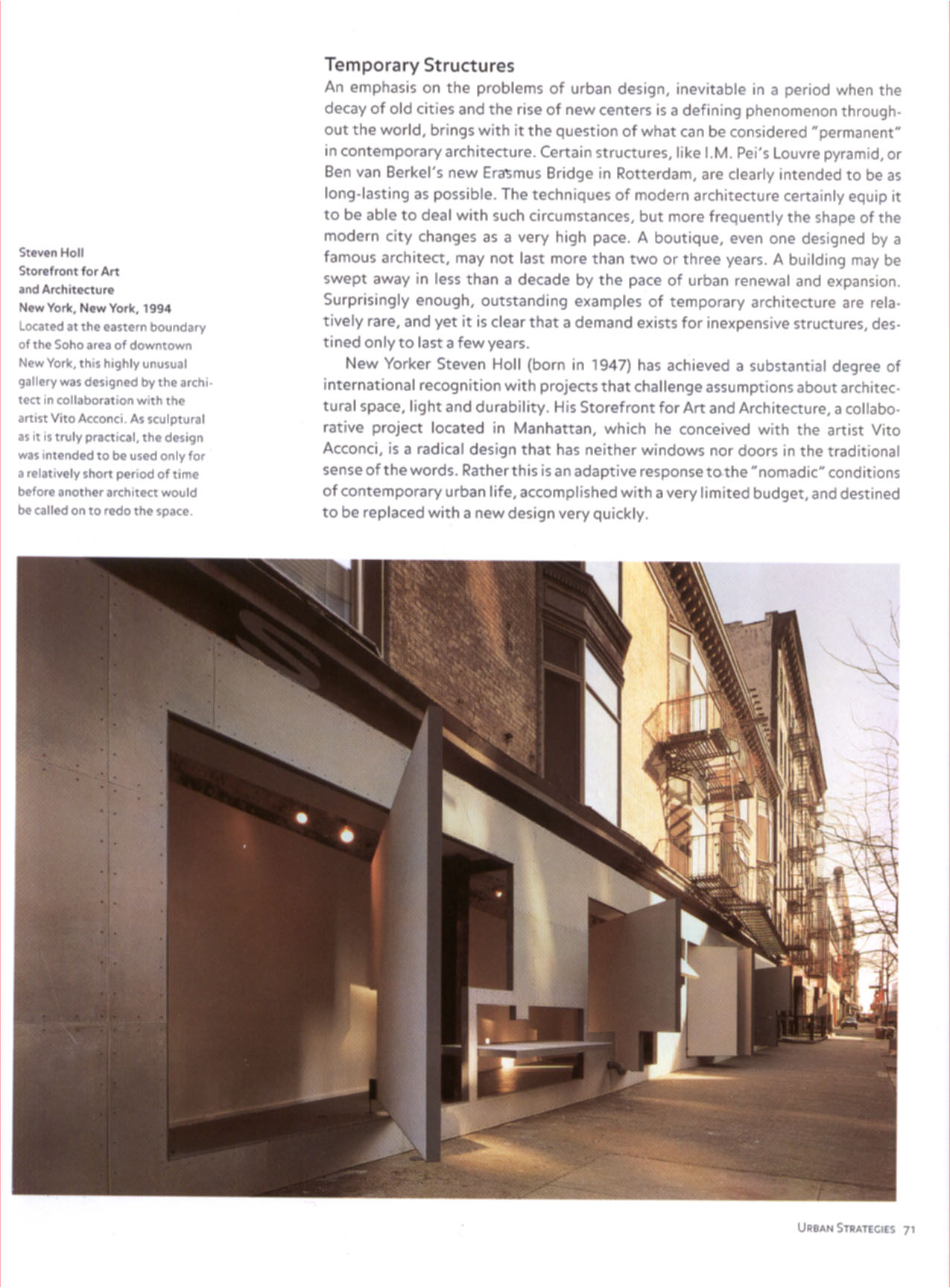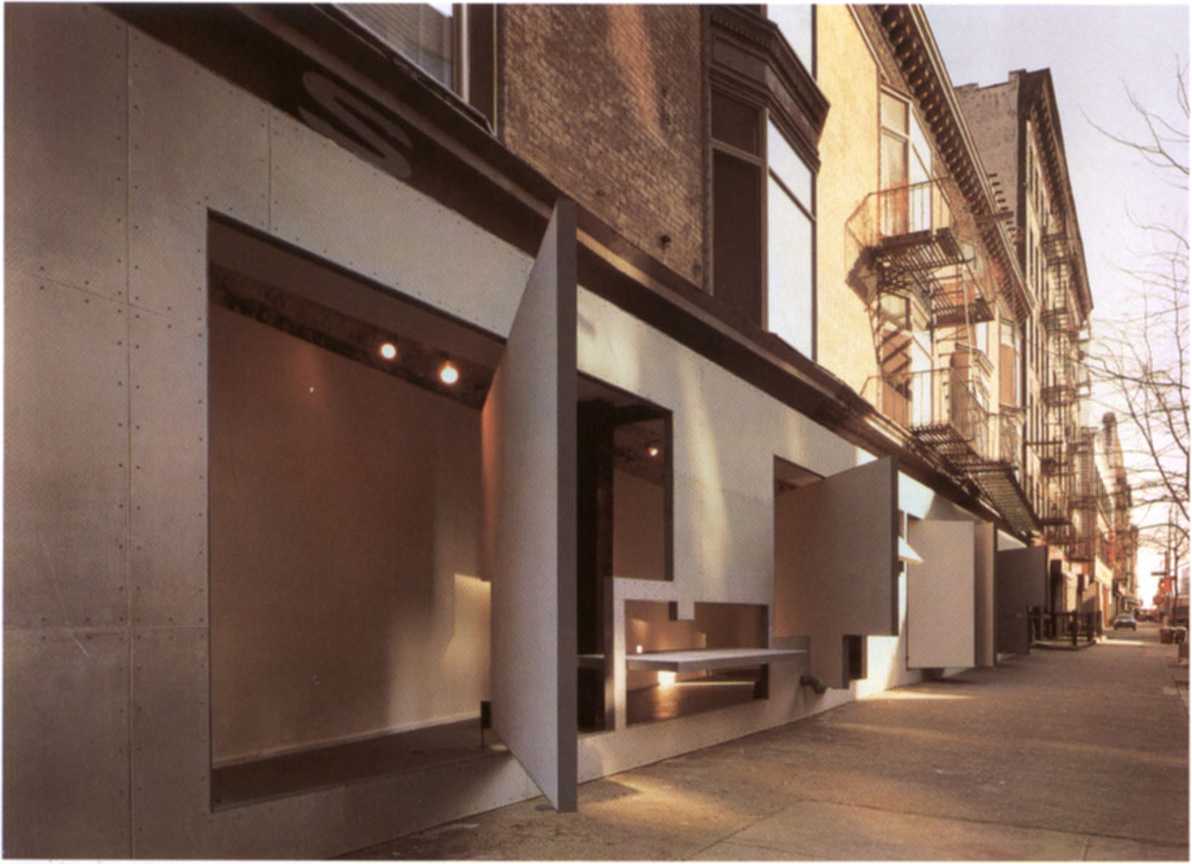New Forms Taschen 066

$tcven Holi Storcfront for Art and Architecture New York, New York, 1994 located at the eastern boundary of the Soho area of downtown New York, this highly unusual galiery was designed by the archi-tect in collaboration with the artist Vito Acconci. As sculptural as it is truły practical. the design was mtended to be used only for a relatively short period of time before another architect would be called on to redo the space.
Temporary Structures
An emphasis on the problems of urban design, inevitable in a period when the decay of old cities and the rise of new centers is a defining phenomenon through-out the world, brings with it the question of what can be considered "permanent" in contemporary architeaure. Certain struaures, like I.M. Pei's Louvre pyramid.or Ben van Berkel's new Erasmus Bridge in Rotterdam, are clearly intended to be as long-lasting as possible. The techniques of modern architecture certainly equip it to be able to deal with such circumstances, but morę frequently the shape of the modern city changes as a very high pace. A boutique, even one designed by a famous architect, may not last morę than two or three years. A buitding may be swept away in less than a decade by the pace of urban renewal and expansion. Surprisingly enough, outstanding examples of temporary architeaure are rela-tively rare, and yet it is elear that a demand exists for inexpensive struaures, des-tined only to last a few years.
New Yorker Steven Holi (born in 1947) has achieved a substantial degree of international recognition with projeas that challenge assumptions about architec-tural space, light and durability. His Storefront for Art and Architeaure, a collabo-rative projea located in Manhattan, which he conceived with the artist Vito Acconci, is a radical design that has neither Windows nor doors in the traditional sense of the words. Rather this is an adaptive response to the "nomadic' conditions of contemporary urban life, accomplished with a very limited budget, and destined to be replaced with a new design very guickly.

Urban Stratecics 71
Wyszukiwarka
Podobne podstrony:
New Forms Taschen 067 A Pagos 72/73 St«ven Holi Storef ront for Art and Architecture
New Forms Taschen 067 A Pagos 72/73 St«ven Holi Storef ront for Art and Architecture
47870 New Forms Taschen 214 Notes 1 Wigloy, Mark, in: Deconstruc-twist Architectur
New Forms Taschen 161 Ptges 170/171 Simon Ungers and Tom Kinslow T-House Wilton. Naw York. 1988-94 B
New Forms Taschen 167 Bortom I.M.Pei Bell Tower Misono. Shiga. Japan. 1992 located at the end o
New Forms Taschen 171 Pi ges 182/183 Tadao Ando Meditation Spać*. UNESCO Pan*, Franca, 1994-95 This
New Forms Taschen 188 Pages 190/199 Erie Owen Moss Ince Theater Cutver City, California, 1994 (
New Forms Taschen 214 Notes 1 Wigloy, Mark, in: Deconstruc-twist Architecture. The
więcej podobnych podstron